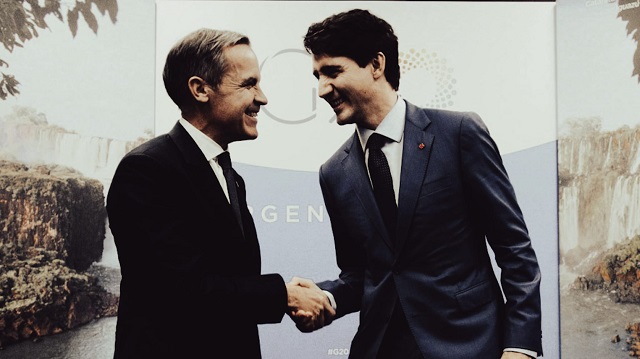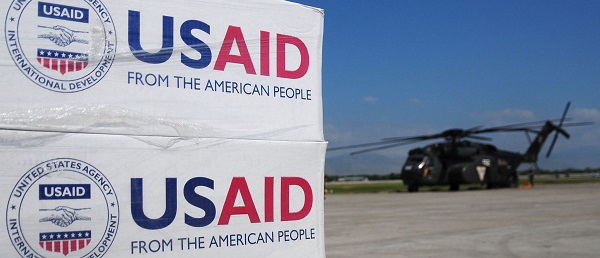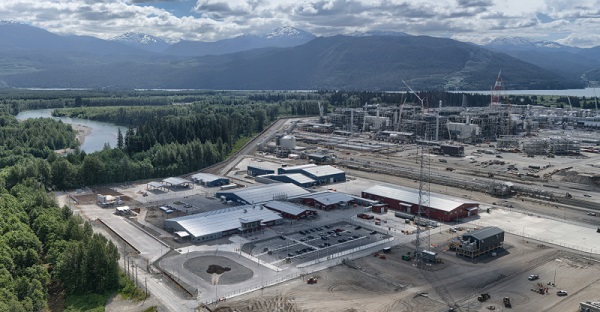Frontier Centre for Public Policy
Mark Carney’s Leadership Win Mirrors Past Liberal Failures

From the Frontier Centre for Public Policy
By Lee Harding
The Liberal Party has crowned Mark Carney leader, but his path to victory is riddled with obstacles
The Liberal Party of Canada has selected a non-MP to become prime minister, but precedent suggests he won’t last long. Mark Carney represents the worst aspects of both John Turner’s and Michael Ignatieff’s political rises and appears destined for the same electoral futility.
When Pierre Trudeau stepped down as Liberal leader in 1984 after more than 15 years as prime minister, he left behind a parting gift: over 200 Liberal patronage appointments. His successor, John Turner, agreed to another 70. These appointments became a burden, weighing down Turner’s leadership before it had even begun. Like Carney, Turner was not a sitting MP when he became leader. Forced to call a snap election, he watched the Progressive Conservatives secure the first of two successive majorities.
Now, history is repeating itself. Justin Trudeau’s cabinet made 70 appointments in its final days, including 12 judges. That number doesn’t include the 10 senators he appointed while Parliament was prorogued—nearly 10 per cent of the 105-seat chamber. Like Turner, Carney must navigate a leadership legacy tainted by patronage and an unpopular outgoing prime minister.
But does Carney’s experience, reputation, and distance from Trudeau offer him a fresh start? It seems unlikely. Unlike Turner, Carney has never held elected office.
Turner at least had a political track record. As a cabinet minister under two prime ministers, he handled high-profile Justice and Finance portfolios. He also benefited from a nine-year break from politics, distancing himself from the unpopular Trudeau. None of it mattered. Turner still lost.
Liberals hope Carney can ride a wave of popularity after a dominant leadership victory, securing 85 per cent support. But what did he really win? A former central banker, he climbed atop a heap of ruins.
His victory over Chrystia Freeland, Karina Gould, and former MP Frank Baylis was less a competitive race and more a coronation. Freeland carried the baggage of Trudeau’s policies, while the other two lacked national recognition. Carney, the only contender without direct ties to Trudeau’s government, was the default choice. The Liberal Party is adrift, and he simply took the helm.
But winning an uncontested leadership race is no guarantee of electoral success. Turner’s rise in 1984 was far more hard-fought—he overcame political heavyweights, including Jean Chrétien and four other cabinet ministers, in a real contest for the party’s future. Yet despite his credentials and broad support within the party, Canadians still rejected him.
And unlike Turner, Carney’s leadership victory raises serious legitimacy concerns. Liberal leadership races allow votes from permanent residents (non-citizens) and minors aged 14 to 17—groups that have no say in a general election. Even more troubling, of the 400,000 votes cast, only 147,000 were verified. Carney received 126,000 of those votes, but nearly two-thirds of ballots were rejected. Had those votes gone to any of his opponents, Carney’s win would have been far from certain.
A Rebel News petition calling for Elections Canada, CSIS, and the RCMP to audit the leadership vote is already circulating. While skepticism over the process is reasonable, it’s doubtful that meaningful answers will emerge.
Beyond legitimacy issues, Carney shares another unfortunate trait with a failed Liberal leader: Michael Ignatieff.
Ignatieff followed Stéphane Dion, whose push for a carbon tax proved deeply unpopular. The Conservatives quickly branded Ignatieff, a long-time Harvard professor, as an elitist disconnected from ordinary Canadians. Their “He didn’t come back for you” attack ads stuck, and Ignatieff led the Liberals to a historic defeat, falling to third-party status.
Carney faces the same vulnerability. After years in England, he will struggle to shake the image of an out-of-touch globalist. His French, weaker than Ignatieff’s, will also hurt him in Quebec, a province that abandoned the Liberals in 2011 in favour of the NDP.
History suggests Carney’s leadership will pave the way for another Conservative majority government—just as Turner and Ignatieff’s failures did.
Carney’s leadership campaign combines the worst aspects of 1984 and 2011. As an unelected, elitist ex-pat with weak French, he carries a Liberal banner weighed down by both Trudeau’s baggage and the deeply unpopular carbon tax.
A Conservative government with a mandate for reform is increasingly likely. A slimmed-down civil service, reduced regulations, the abolition of the carbon tax, and renewed pipeline construction could all be on the horizon. After nearly a decade of Liberal rule, Canada’s political pendulum seems set to swing back once again.
Lee Harding is Research Fellow for the Frontier Centre for Public Policy.
Frontier Centre for Public Policy
Canada’s New Border Bill Spies On You, Not The Bad Guys

From the Frontier Centre for Public Policy
By Lee Harding
Lee Harding warns that the federal government’s so-called border bill lets officials snoop on your data, ban big cash payments and even open your mail – all without a warrant
Think Bill C-2 is about stopping fentanyl? Think again. It lets the feds snoop your data, open your mail and ban big cash payments – no warrant needed
The federal government is using the pretext of border security, the fentanyl crisis and transnational crime to push through Bill C-2, legislation that dangerously expands surveillance powers, undermines Canadians’ privacy and restricts financial freedom. This so-called Strong Borders Act is less about protecting borders and more about policing citizens.
Bill C-2, a 130-page omnibus bill introduced on June 3, grants broad new powers to government agencies to spy on Canadians and share personal information with foreign countries. A more honest title might be the Snoop and Gossip Act.
Among its most intrusive provisions, the bill would make it illegal for any business, profession or charity to accept cash payments over $10,000, even if made in smaller, related transactions. Want to pay a contractor $10,001 in five separate payments for home renovations? Too bad.
The Justice Centre for Constitutional Freedoms quickly condemned the move. “Restricting the use of cash is a dangerous step toward tyranny and totalitarianism,” the organization posted to X. “Cash gives citizens privacy, autonomy, and freedom from surveillance by government and by banks.”
Under Bill C-2, internet service providers could be compelled—under threat of fines—to hand over names, locations and “pseudonyms” of users without a warrant. Any peace officer or public officer can demand this data by merely claiming “reasonable grounds to suspect” an offence “has been or will be committed.”
It doesn’t stop there. The bill would also authorize the government to open private mail under the same vague threshold of suspicion.
Experts in law and privacy say the bill is a massive overreach. University of Ottawa internet law scholar Michael Geist and Kate Robertson of the University of Toronto’s Citizen Lab both point out that successive federal governments have sought to expand internet surveillance for years, but Bill C-2 goes further than ever before.
“Bill C-2’s big brother tactics combine expansive warrantless disclosure with unprecedented secrecy,” Geist warns. He adds that the bill “overreaches by including measures on internet subscriber data that have nothing to do with border safety or security but raise privacy and civil liberties concerns.”
If the intent were truly to combat fentanyl trafficking and transnational crime, better tools already exist. Conservative MP Frank Caputo pointed out that the bill has 16 parts but says nothing about increasing penalties or jail time for fentanyl traffickers.
“There is nothing about bail in the bill,” Caputo said during early debate on the bill. “In this omnibus bill, it says that offenders can serve their sentence for trafficking in fentanyl from their couch.”
Bloc Québécois MP Claude DeBellefeuille argued that strengthening border security requires more boots on the ground. Two rural border crossings in her riding recently had their staffed hours cut in half.
“It is estimated that the CBSA (Canada Border Services Agency) already has a shortage of between 2,000 and 3,000 border services officers for current duties. If they are given new responsibilities, however necessary, there will be an even greater shortage,” she said.
Not only does Bill C-2 contradict Supreme Court precedent. It also sets the stage for Canada to share sensitive personal information with foreign governments. In 2014, the court ruled that Canadians have a “reasonable expectation of privacy in the subscriber information” provided to internet service providers and that police requests for such data amount to a “search” requiring a warrant.
Robertson warns that the bill not only defies this precedent but also enables Canada to share this dubiously acquired information with 49 other countries under the Second Additional Protocol to the Cybercrime Convention. Canada signed the agreement in 2023 but hasn’t ratified it. Bill C-2 would make that possible.
She calls the protocol’s weak human rights safeguards “a direct threat to existing protections under international human rights law.” Robertson co-authored a submission urging the Department of Justice to reject the 2AP and instead support data-sharing frameworks that are built on consistent rights protections across all signatories.
Further complicating matters, Canada is in negotiations with the United States over a data-sharing agreement under that country’s CLOUD Act. Canada’s willingness to comply may reflect lingering trade pressures from the Trump administration, pressures that could again push Canada to compromise its legal independence and citizens’ rights.
This bill should be scrapped or thoroughly revised. Canadians should not have to surrender their privacy and human rights to serve a global law enforcement agenda that disregards civil liberties. If the line between national security and authoritarianism is erased, the greatest threat to Canadians may no longer be drug traffickers—it may be their own government.
Lee Harding is a research fellow at the Frontier Centre for Public Policy.
Frontier Centre for Public Policy
New Book Warns The Decline In Marriage Comes At A High Cost

From the Frontier Centre for Public Policy
Travis Smith reviews I… Do? by Andrea Mrozek and Peter Jon Mitchell, showing that marriage is a public good, not just private choice, arguing culture, not politics, must lead any revival of this vital institution.
Andrea Mrozek and Peter Jon Mitchell, in I… Do?, write that the fading value of marriage is a threat to social stability
I… Do? by Andrea Mrozek and Peter Jon Mitchell manages to say something both obvious and radical: marriage matters. And not just for sentimental reasons. Marriage is a public good, the authors attest.
The book is a modestly sized but extensively researched work that compiles decades of social science data to make one central point: stable marriages improve individual and societal well-being. Married people are generally healthier, wealthier and more resilient. Children from married-parent homes do better across almost every major indicator: academic success, mental health, future earnings and reduced contact with the justice system.
The authors refer to this consistent pattern as the “marriage advantage.” It’s not simply about income. Even in low-income households, children raised by married parents tend to outperform their peers from single-parent families. Mrozek and Mitchell make the case that marriage functions as a stabilizing institution, producing better outcomes not just for couples and kids but for communities and, by extension, the country.
While the book compiles an impressive array of empirical findings, it is clear the authors know that data alone can’t fix what’s broken. There’s a quiet but important concession in these pages: if statistics alone could persuade people to value marriage, we would already be seeing a turnaround.
Marriage in Canada is in sharp decline. Fewer people are getting married, the average age of first marriage continues to climb, and fertility rates are hitting historic lows. The cultural narrative has shifted. Marriage is seen less as a cornerstone of adult life and more as a personal lifestyle choice, often put off indefinitely while people wait to feel ready, build their careers or find emotional stability.
The real value of I… Do? lies in its recognition that the solutions are not primarily political. Policy changes might help stop making things worse, but politicians are not going to rescue marriage. In fact, asking them to may be counterproductive. Looking to politicians to save marriage would involve misunderstanding both marriage and politics. Mrozek and Mitchell suggest the best the state can do is remove disincentives, such as tax policies and benefit structures that inadvertently penalize marriage, and otherwise get out of the way.
The liberal tradition once understood that family should be considered prior to politics for good reason. Love is higher than justice, and the relationships based in it should be kept safely outside the grasp of bureaucrats, ideologues, and power-seekers. The more marriage has been politicized over recent decades, the more it has been reshaped in ways that promote dependency on the impersonal and depersonalizing benefactions of the state.
The book takes a brief detour into the politics of same-sex marriage. Mrozek laments that the topic has become politically untouchable. I would argue that revisiting that battle is neither advisable nor desirable. By now, most Canadians likely know same-sex couples whose marriages demonstrate the same qualities and advantages the authors otherwise praise.
Where I… Do? really shines is in its final section. After pages of statistics, the authors turn to something far more powerful: culture. They explore how civil society—including faith communities, neighbourhoods, voluntary associations and the arts can help revive a vision of marriage that is compelling, accessible and rooted in human experience. They point to storytelling, mentorship and personal witness as ways to rebuild a marriage culture from the ground up.
It’s here that the book moves from description to inspiration. Mrozek and Mitchell acknowledge the limits of top-down efforts and instead offer the beginnings of a grassroots roadmap. Their suggestions are tentative but important: showcase healthy marriages, celebrate commitment and encourage institutions to support rather than undermine families.
This is not a utopian manifesto. It’s a realistic, often sobering look at how far marriage has fallen off the public radar and what it might take to put it back. In a political climate where even mentioning marriage as a public good can raise eyebrows, I… Do? attempts to reframe the conversation.
To be clear, this is not a book for policy wonks or ideologues. It’s for parents, educators, community leaders and anyone concerned about social cohesion. It’s for Gen Xers wondering if their children will ever give them grandchildren. It’s for Gen Zers wondering if marriage is still worth it. And it’s for those in between, hoping to build something lasting in a culture that too often encourages the opposite.
If your experiences already tell you that strong, healthy marriages are among the greatest of human goods, I… Do? will affirm what you know. If you’re skeptical, it won’t convert you overnight, but it might spark a much-needed conversation.
Travis D. Smith is an associate professor of political science at Concordia University in Montreal. This book review was submitted by the Frontier Centre for Public Policy.
-

 Fraser Institute1 day ago
Fraser Institute1 day agoBefore Trudeau average annual immigration was 617,800. Under Trudeau number skyrocketted to 1.4 million annually
-

 MAiD1 day ago
MAiD1 day agoCanada’s euthanasia regime is already killing the disabled. It’s about to get worse
-

 Frontier Centre for Public Policy1 day ago
Frontier Centre for Public Policy1 day agoNew Book Warns The Decline In Marriage Comes At A High Cost
-

 Business1 day ago
Business1 day agoPrime minister can make good on campaign promise by reforming Canada Health Act
-

 Addictions1 day ago
Addictions1 day ago‘Over and over until they die’: Drug crisis pushes first responders to the brink
-

 International1 day ago
International1 day agoChicago suburb purchases childhood home of Pope Leo XIV
-

 Daily Caller1 day ago
Daily Caller1 day agoUSAID Quietly Sent Thousands Of Viruses To Chinese Military-Linked Biolab
-

 Energy1 day ago
Energy1 day agoLNG Export Marks Beginning Of Canadian Energy Independence



